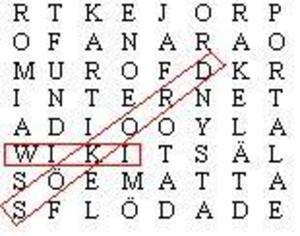Premiering in 1953, Arthur Miller’s The Crucible was a scathing attack on the Communist scare of the era in the guise of a dramatization of the witch hunts that took place in Salem in the 1690s. This play is an important work in American literature and a cornerstone in studying American history as well. This analysis discusses the historical evidence The Crucible leaves us about the Communist hysteria of the 1950s.
Analysis
In The Crucible, Arthur Miller presents a dramatized version of the true events of one fateful year in Massachusetts’s history. Salem was a town torn apart by its own inner tensions and the rigid societal structure dictated by the Puritan theology. Large and small landowners were often at odds, here represented by the rivalry between Putnam and Corey. Portions of the outlying community wanted to break away from the authority of Salem, in the play symbolized by the antagonism between Proctor and Parris. Everywhere in Puritan society, the overbearing reach of religion dominated life and made itself the center of all things. These tensions, and so many more, exploded in 1692 thanks to the single spark of the first witchcraft accusation.
This explosion of tensions was made worse by the effects of the slavish obedience to religious authority. As Danforth stated in Act III, one was either aligned with the authority or was against it. There was no middle ground, no room to criticize without breaking away. With this sort of attitude, there is also no room in society for a difference of opinion, no matter how trivial. It also becomes a society where neighbors are spying on neighbors, keeping track of everyone else’s movements in order to root out the evil of nonconformity. This need to conform, to hold oneself to the proper standards, was the key factor holding Proctor back from intervening in the trials before they went too far. He was too worried about how the revelation of his affair with Abigail would look to take action against the crazed witch trials.
However true to the story of Salem, no analysis of The Crucible would be complete without examining the times in which it was written and first performed. This play opened in 1953, a few short years from the end of World War Two and right in the midst of McCarthyism and the Red Scare. There are clear parallels between the situation in Salem and that of Nazi Germany, most notably in the slavish adherence to authority, no matter how absurd, and in the paranoia of neighbors. However, the allegorical power of The Crucible toward the Communist “Witch Hunts” of the 1950s is its most potent meaning.
The fear of the spread of Communism in the 1950s was almost palpable in the United States, especially in the first few years of the decade, when the Korean War was being fought as a proxy battle in the Cold War. The division of Communist versus Capitalist (or ‘Free’ in the heavily slanted parlance) societies presented the same dichotomy of darkness and light that Danforth referenced in the third act. Like Danforth, many on both sides of this divide also felt that there was no middle ground, either you supported free, democratic, capitalistic society, or you were to be counted among the enemy.
The similarities are even more striking when considering the most effective tool in the anti-communist arsenal-fear. In the late 1940s and early 1950s, people were routinely brought before the House Un-American Activities Committee (HUAC) and made to testify. First, they would be asked the now infamous question, “Are you now, or have you ever been, a member of the Communist Party?” Then, those brought before the committee would be asked to provide names of those who they knew or suspected of also being communists. Much like the Salem trials, the only way to clear your own name was to confess and name others. In this way, Arthur Miller’s The Crucible is not only a historical tragedy, but a reminder for his day of the danger of a paranoid, over-reaching authority.
Plot Summary of Acts I and II
Plot Summary of Acts III and IV


